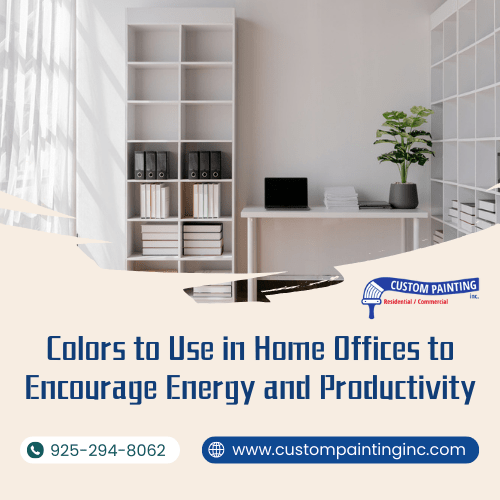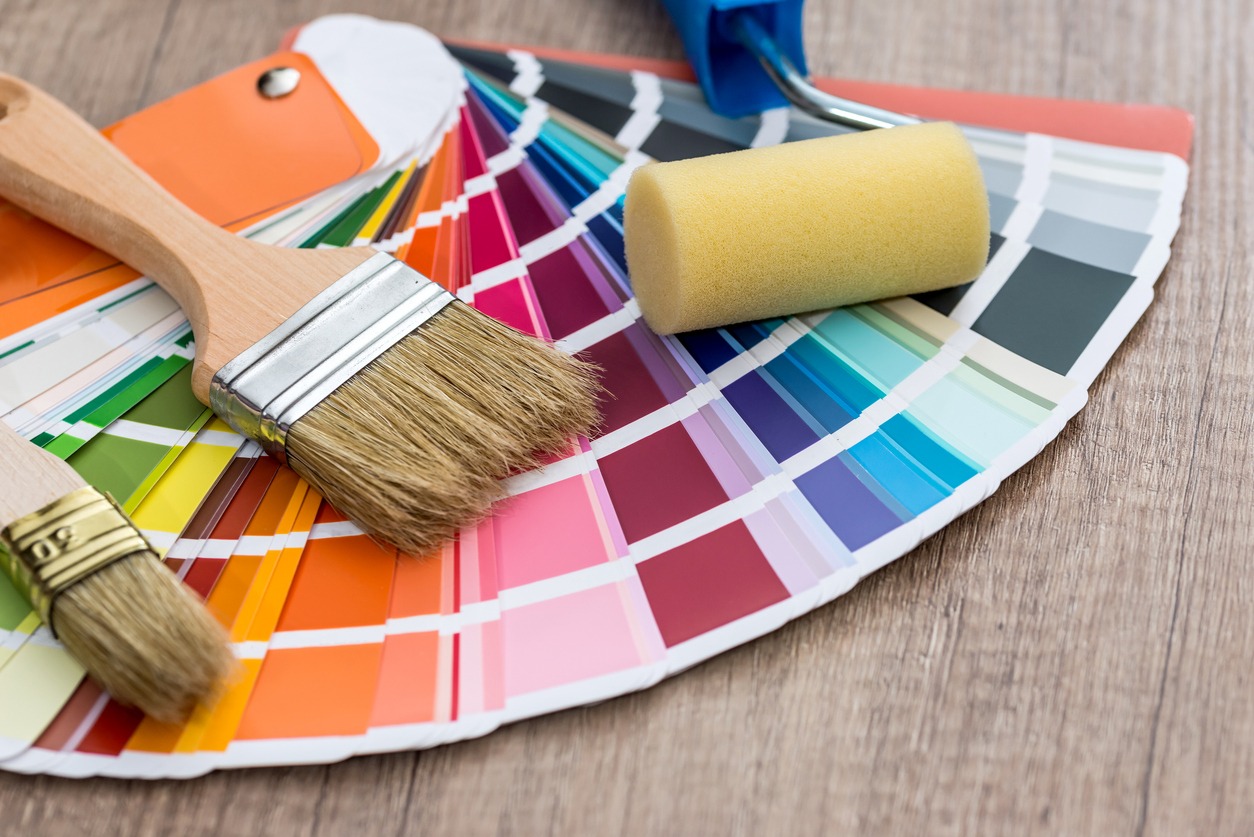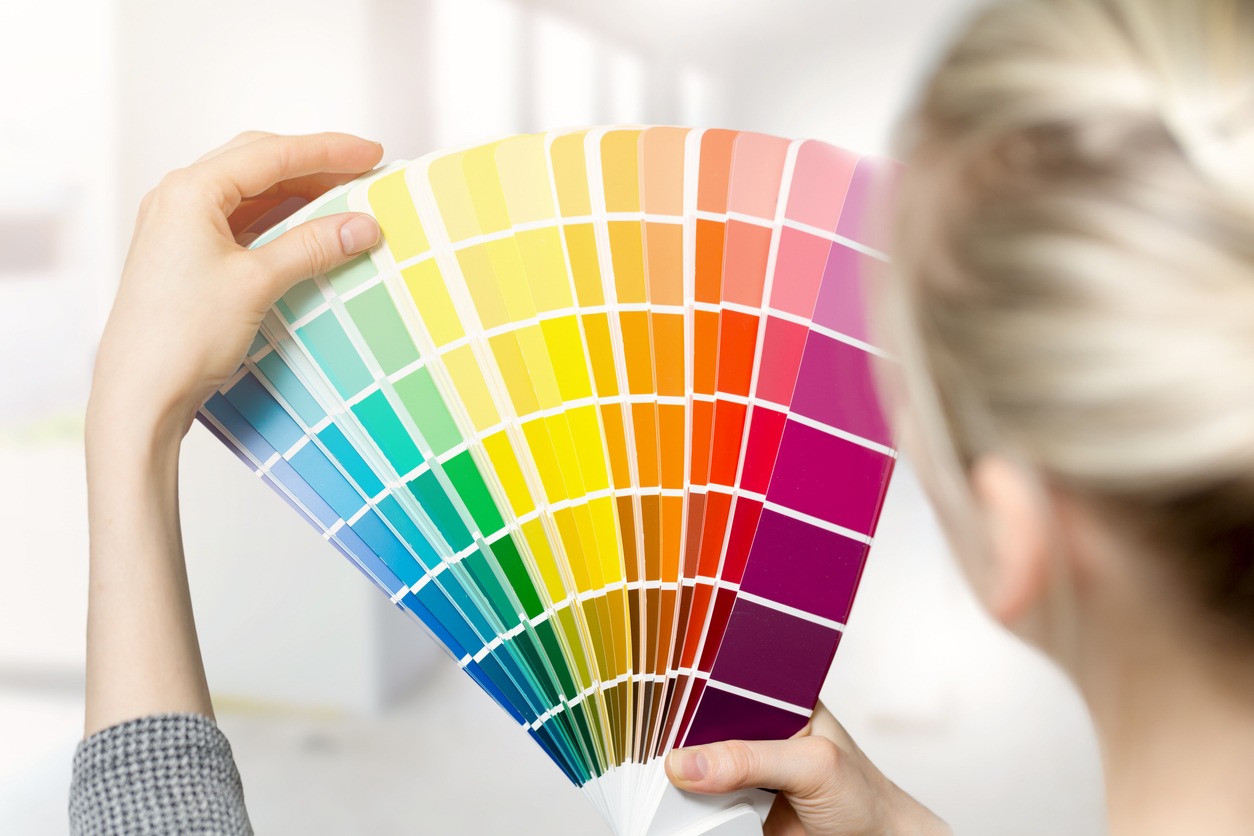Choosing the right colors for your home office can significantly impact your energy levels and productivity. In a space where focus and efficiency are paramount, the colors surrounding you play a crucial role in setting the tone for your workday. From vibrant hues that boost energy to calming shades that enhance concentration, the right palette can transform your home office into a powerhouse of productivity. In this article, we’ll explore the best colors to use in your home office to create an environment that supports and stimulates your work efforts.
Understanding Color Psychology
Color psychology is the study of how colors influence human behavior and emotions. Different colors can evoke various psychological responses, affecting our mood, productivity, and even physical well-being. This understanding is especially valuable when designing spaces where focus and productivity are essential, such as home offices.
The Impact of Colors on Emotions and Behaviors
- Red: Often associated with energy and passion, red can increase heart rate and stimulate a sense of urgency. While it can boost enthusiasm, it’s best used as an accent color rather than a dominant hue to avoid feelings of agitation.
- Blue: Known for its calming and stabilizing effects, blue can enhance concentration and mental clarity. It’s a popular choice for offices as it promotes a sense of tranquility and focus.
- Green: Symbolizing nature and renewal, green is easy on the eyes and can reduce stress. It encourages balance and harmony, making it an excellent choice for a productive workspace.
- Yellow: Bright and cheerful, yellow can stimulate creativity and optimism. However, in large amounts, it might cause anxiety, so it’s best used in moderation.
- Orange: Combining the energy of red and the cheerfulness of yellow, orange can inspire enthusiasm and creativity. It’s a great choice for brainstorming areas but might be too stimulating for tasks requiring deep concentration.
- Purple: Often associated with luxury and creativity, purple can be both soothing and inspiring. Lighter shades are ideal for a calm, creative environment, while darker tones can add a touch of elegance and sophistication.
- Neutral Colors: Shades like white, gray, and beige can create a clean and professional atmosphere. They provide a versatile backdrop that can be easily paired with brighter accent colors to balance stimulation and calmness.
The Significance of Choosing the Right Colors for a Workspace
Selecting the appropriate colors for your home office is more than just an aesthetic choice; it’s a strategic decision that can enhance your productivity and overall well-being. The right colors can:
- Boost Energy Levels: Vibrant colors like red and orange can invigorate you, making them perfect for moments when you need a burst of energy.
- Enhance Focus and Concentration: Calming hues like blue and green help maintain concentration, reducing distractions and promoting a steady workflow.
- Stimulate Creativity: Bright colors like yellow and orange can inspire innovative thinking and creativity, which is crucial for tasks that require brainstorming and out-of-the-box ideas.
- Reduce Stress: Soft, neutral colors and natural tones can create a serene environment, helping to alleviate stress and anxiety, which is essential for maintaining a healthy work-life balance.
Understanding the psychological effects of colors allows you to tailor your home office environment to support your specific work needs. By carefully selecting and combining colors, you can create a workspace that not only looks good but also enhances your productivity and well-being.
Best Colors for Home Offices
Creating a productive home office environment requires careful consideration of the colors that will surround you. The right hues can enhance your focus, boost your energy, and even stimulate creativity. Here are some of the best colors to use in home offices, each chosen for its unique ability to positively influence your work performance.
1. Blue: The Color of Focus and Calm
Blue is a popular choice for home offices due to its calming and stabilizing effects. It helps to reduce stress and increase concentration, making it ideal for tasks that require a lot of focus. Lighter shades of blue can create a serene environment, while deeper blues can add a touch of sophistication and depth to the space.
2. Green: Nature’s Balance and Harmony
Green is associated with nature, renewal, and tranquility. It’s easy on the eyes and can help reduce fatigue, making it perfect for long working hours. Green also promotes a sense of balance and harmony, which can be beneficial in maintaining a calm and productive workspace. Incorporating plants or nature-inspired decor can enhance the soothing effects of green.
3. Yellow: Brightness and Creativity
Yellow is a bright and cheerful color that can stimulate creativity and optimism. It’s a great choice for home offices where brainstorming and innovative thinking are essential. However, it’s important to use yellow in moderation, as too much can be overwhelming and cause anxiety. Accent walls, artwork, or accessories in yellow can provide the right amount of stimulation without overpowering the space.
4. Gray: Professional and Versatile
Gray is a versatile neutral color that can create a clean, professional atmosphere in your home office. It pairs well with almost any other color, making it easy to customize your space with colorful accents. Light gray can provide a soft, calming effect, while darker shades can add a touch of elegance and modernity.
5. White: Clean and Simple
White is a timeless color that can make a home office feel bright and spacious. It reflects light, which can help improve mood and energy levels. White provides a blank canvas, allowing you to add personality with colorful decor and accessories. To avoid a sterile feeling, consider using off-white or warm white tones and adding textures and patterns.
6. Purple: Creativity and Luxury
Purple, especially in lighter shades like lavender, can create a calm and creative environment. It’s often associated with luxury and sophistication. Lighter purples can be soothing and inspiring, making them ideal for creative work. Darker purples can add a touch of elegance and depth, making your home office feel more refined.
7. Orange: Energetic and Enthusiastic
Orange combines the energy of red and the cheerfulness of yellow, making it an excellent choice for boosting enthusiasm and creativity. It’s best used in moderation, as too much orange can be overstimulating. Consider using it for accent walls, furniture, or accessories to bring a lively and energetic vibe to your workspace.
8. Beige: Warm and Inviting
Beige is a warm neutral that can create a comfortable and inviting home office. It’s versatile and works well with a variety of other colors, making it easy to personalize your space. Beige can help create a cozy atmosphere that promotes focus and relaxation, perfect for balancing work and comfort.
Selecting the best colors for your home office involves understanding how different hues can influence your mood and productivity. Experiment with these colors to find the perfect combination that suits your work style and preferences.
Combining Colors for Maximum Effect
A well-thought-out color palette can bring balance, energy, and focus to your workspace. Here are some strategies for combining colors for maximum effect, the importance of accent colors and accessories, and examples of effective color combinations for home offices.
- Use the 60-30-10 Rule: This interior design principle helps create a balanced color scheme. Use 60% of a dominant color (often for walls), 30% of a secondary color (furniture and upholstery), and 10% of an accent color (decorative items and accessories). This rule ensures that your color palette is cohesive and visually appealing.
- Consider Color Temperature: Combine warm colors (reds, oranges, yellows) with cool colors (blues, greens, purples) to create a balanced environment. Warm colors can energize and stimulate, while cool colors can calm and focus.
- Monochromatic Scheme: Use different shades and tints of a single color to create a sophisticated and cohesive look. This approach can be calming and is easy on the eyes, making it suitable for high-focus work areas.
- Analogous Colors: Choose colors that are next to each other on the color wheel (e.g., blue and green, yellow and orange) for a harmonious look. These combinations are pleasing to the eye and create a serene environment.
- Complementary Colors: Use colors opposite each other on the color wheel (e.g., blue and orange, yellow and purple) to create a vibrant and dynamic contrast. This strategy can make specific elements stand out and add energy to the space.
The Importance of Accent Colors and Accessories
Accent colors and accessories are crucial in adding depth and personality to your home office. They can break up monotony, highlight specific areas, and inject energy into the space. Here’s how to use them effectively:
- Highlight Key Areas: Use accent colors to draw attention to important areas like your desk, shelves, or creative zones. This can help delineate spaces and improve functionality.
- Add Texture and Interest: Accessories like throw pillows, rugs, artwork, and plants add texture and interest to your office. These items can carry accent colors and make the space feel more inviting and personalized.
- Maintain Balance: While accent colors are meant to stand out, they should not overwhelm the primary color scheme. Use them sparingly to maintain a balanced and cohesive look.
Examples of Effective Color Combinations for Home Offices
- Blue and White with Yellow Accents: Blue creates a calm and focused environment, while white keeps the space bright and clean. Yellow accents add a touch of creativity and energy. Use yellow for desk accessories, artwork, or a single piece of furniture.
- Green and Beige with Wood Tones: Green promotes balance and reduces eye strain, while beige creates a warm and inviting atmosphere. Incorporate natural wood tones through furniture and shelves to add warmth and a touch of nature.
- Gray and Blue with Orange Accents: A combination of gray and blue can create a professional and calming environment. Add orange accents to inject energy and enthusiasm without overwhelming the senses. Use orange in small decor items like cushions, lamps, or wall art.
- White and Lavender with Metallic Accents: White keeps the space bright and airy, while lavender adds a touch of creativity and calm. Metallic accents in gold or silver can add elegance and sophistication, making the space feel more luxurious.
- Navy Blue and Gold with Neutral Tones: Navy blue provides a strong and focused backdrop, while gold accents add warmth and luxury. Use neutral tones like beige or gray for larger furniture pieces to balance the richness of navy and gold.
Experiment with different color combinations to find the perfect palette that suits your style and work needs.
Conclusion
Choosing the right colors for your home office can significantly impact your productivity and well-being. By understanding color psychology and effectively combining colors, you can create a workspace that is both functional and inspiring. For personalized advice and professional painting services, contact Custom Painting, Inc. at 925-294-8062 or through their contact form. Transform your home office into the perfect environment for productivity and success.



